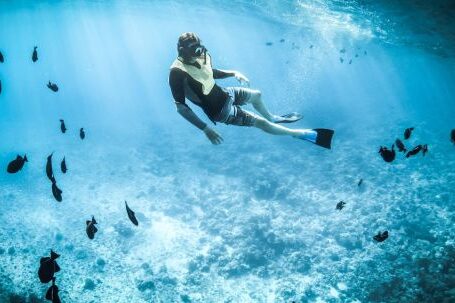Diving is an exhilarating activity that allows us to explore the wonders of the underwater world. However, in order to have a safe and enjoyable dive, it is crucial to have the right weight system. The weight system plays a vital role in maintaining buoyancy and keeping divers properly balanced underwater. In this article, we will discuss the key factors to consider when choosing the right weight system for diving.
Understanding Buoyancy and Weight
Before delving into the specifics of weight systems, it is important to understand the concept of buoyancy and weight. Buoyancy refers to the upward force exerted by a fluid that opposes the weight of an immersed object. In diving, maintaining neutral buoyancy is essential to ensure that divers neither sink nor float to the surface. A weight system is used to offset the positive buoyancy of the diver and achieve neutral buoyancy.
Consider Your Body Composition
One of the first things to consider when choosing a weight system is your body composition. Factors such as body fat percentage and muscle mass can affect your buoyancy underwater. Divers with a higher body fat percentage typically require more weight to achieve neutral buoyancy compared to those with lower body fat. Additionally, divers with more muscle mass may require less weight as muscle is denser than fat.
Choose the Right Type of Weight System
There are several types of weight systems available, each with its own advantages and disadvantages. The two main types are integrated weight systems and weight belts. Integrated weight systems consist of weight pockets attached to the buoyancy compensator device (BCD), allowing for easy weight distribution and adjustment. Weight belts, on the other hand, are worn around the waist and can be adjusted by adding or removing weight pouches.
Consider the Environment and Dive Conditions
The environment and dive conditions also play a role in determining the right weight system. For example, diving in saltwater requires more weight compared to freshwater due to the higher density of saltwater. Similarly, diving in colder waters with thicker wetsuits or drysuits may require additional weight to compensate for the increased buoyancy of the dive gear. It is important to consider these factors when choosing a weight system to ensure proper buoyancy control.
Test and Adjust
Once you have chosen a weight system, it is crucial to test and adjust it before going on a dive. This can be done by conducting a buoyancy check in a controlled environment, such as a pool or confined water area. Start by adding weights to achieve neutral buoyancy at the surface, and then descend to a desired depth to check if you are still properly balanced. If necessary, make adjustments by adding or removing weights until you achieve optimal buoyancy control.
Invest in Quality Equipment
Lastly, investing in quality weight system equipment is essential for safety and reliability. Choose weight pockets or belts that are durable and secure, ensuring that the weights will not accidentally come off during a dive. It is also advisable to regularly inspect and maintain your weight system to prevent any malfunctions or failures.
In conclusion, choosing the right weight system is crucial for maintaining proper buoyancy and balance during diving. Consider factors such as body composition, type of weight system, environment, and dive conditions when making your decision. Test and adjust your weight system before diving to ensure optimal buoyancy control. Finally, invest in quality equipment to ensure safety and reliability. With the right weight system, you can dive confidently and explore the underwater world with ease.





